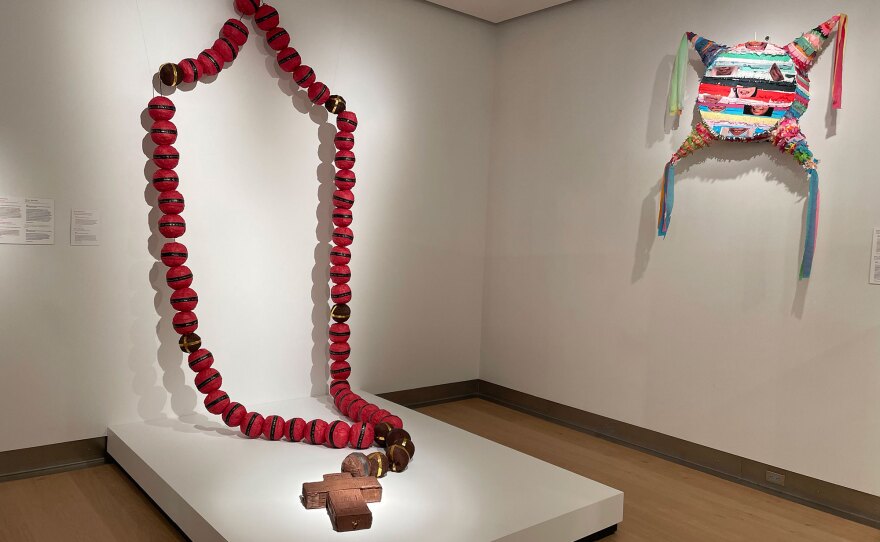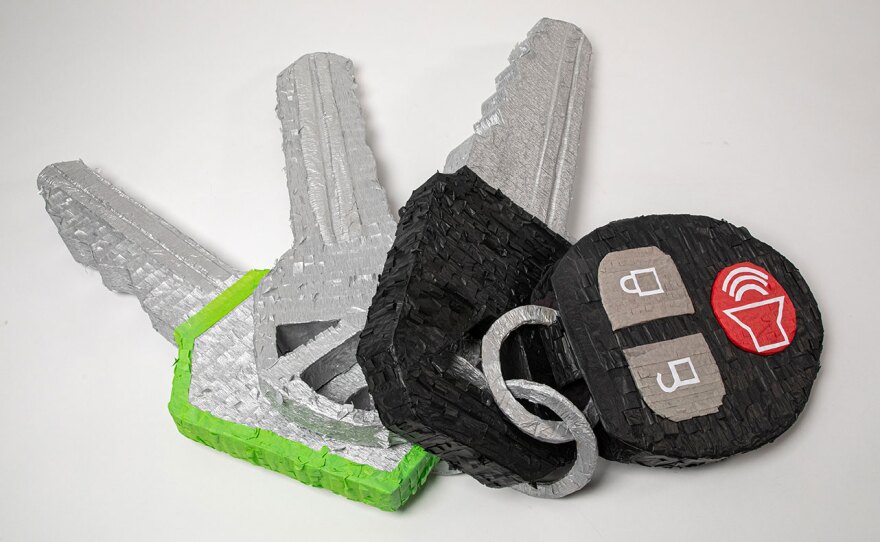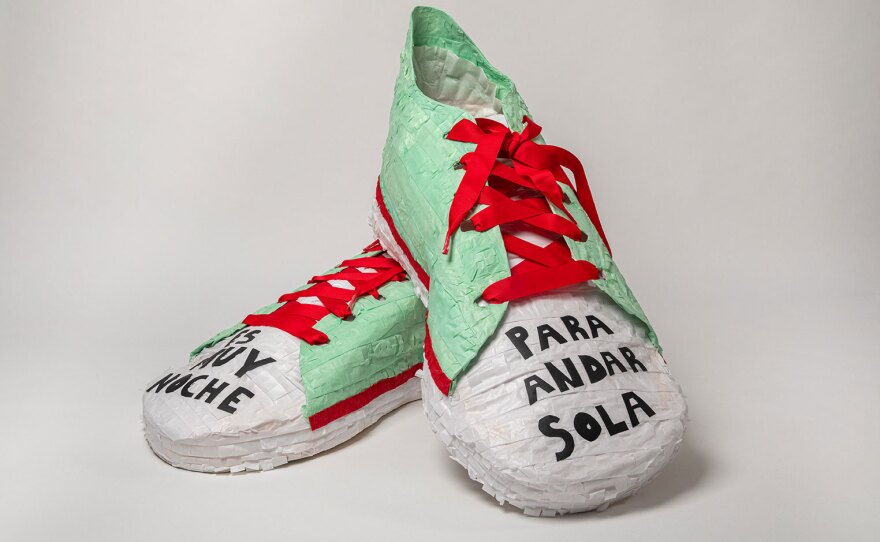Piñatas in a museum is an unlikely sight, but you can see 80 of these traditional cardboard and paper constructions in an exhibit at the Mingei International Museum.
"Piñatas: The High Art of Celebration" includes work from Latinx artists from around the country is currently running till the end of April.
This exhibit is one of the first ever collections of piñatas as art — and it originated at the Craft in America Center in Los Angeles in 2021. Using the Mingei's spacious second floor, the project was able to expand when it opened in San Diego last October.

Local, cross-border artist Diana Benavídez has several pieces in this exhibit. Benavídez was originally drawn to the piñata because it's intertwined with her identity.
"Piñatas: The High Art of Celebration" is on view through Apr. 30 at Mingei International Museum, 1439 El Prado, Balboa Park.
Visiting information:
Tuesday, Wednesday, Saturday and Sunday: 10 a.m. to 5 p.m.
Thursday and Friday: 10 a.m. to 8 p.m.
$0-$15 and free every third Thursday (Apr. 18).
"I think it all started when I was around 12 years old. I lived in Tijuana. My first job was at a Mexican candy place where they sold piñatas — they made and sold piñatas," Benavídez said.
"That's when I had my first intro to piñata making, and after learning how much time, effort, materials went into the sculptures that essentially were just meant to be broken — that kind of just made me feel like there's more that we could do with piñatas."
At first glance a piñata may seem like an unlikely vessel for anything except candy and party prizes, but for Benavídez, it's a natural fit for making activism through art more accessible, and encouraging people to think about her messages.
"The piñata by nature is a violent object. There's violence — and joy," Benavídez said. "People associate piñatas in a joyful way, so they're not intimidated to approach the piñata."
Benavídez has a handful of piñatas on view at the Mingei, including some of her motorized vehicles ("border crossers") and a drone. These works comment on the militarization and surveillance at the Tijuana-San Diego border, and Benavídez sees movement as another natural extension of the piñata and her binational roots.
"There's always maybe an uncle pulling the rope while the kids, you know, hit the piñata," she said. "It also pays homage to something that's a big characteristic of our border, long lines of cars, traffic, people commuting for hours from Tijuana to San Diego and vice versa."

The two works acquired by the Mingei are from her "Text Me When You Get Home" series, a collection of pieces that speak to the rituals women take in order to feel safe.
Oversized sneakers, a rosary and a set of keys represent makeshift self-defense tools and acts of preservation often passed down from mothers to daughters.
"It's intergenerational. My mom taught me how to wear my keys in between my knuckles as a way to protect myself, and that was when I was 14," Benavídez said.

Benevídez recently shared that the Mingei has acquired two of her piñatas for their permanent collection — the sneakers and the rosary.
Traditionally designed to be made using cheap, not-exactly-archival materials and destroyed for fun, a piñata may present conservation challenges to an institution. Following this exhibition, the pieces will "rest" for two years as a preservation protocol.
"I never thought a piñata would ever be part of a museum's permanent collection. But also it's been part of this, like, hilarious dream that I've had since I was 12, where I've wanted to save piñatas. I wanted to find a way to preserve them forever. And this is basically accomplishing that. It's like these two pieces are going to live on forever," Benavídez said.
"But also, as I was researching how many institutions have piñatas, and unfortunately not that many — they have papier-mâché objects, but it's really nice to see that finally, there's going to be representation for piñatas. And I think that traditional piñata makers are gonna feel that sense of honor that their artwork, their craft has been represented through a museum's collection."






